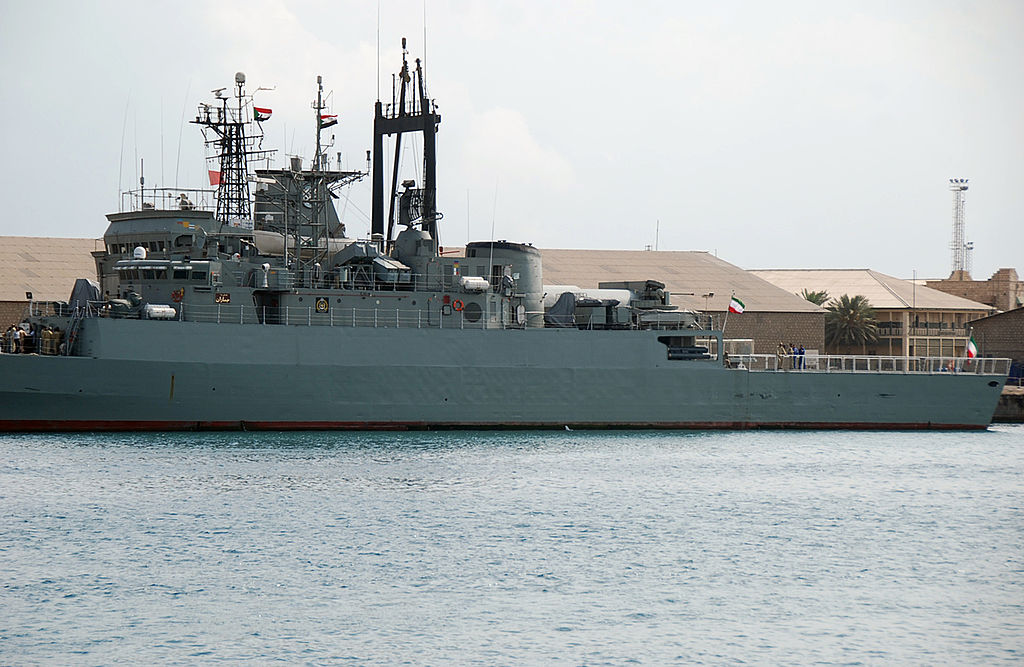ADF STAFF
For the past six months, Iran has supplied the Sudanese Armed Forces (SAF) with weapons, a strategy some analysts believe is designed to pave the way for an Iranian naval presence on Sudan’s Red Sea coast.
To date, Sudan has refused the request for an Iranian helicopter carrier on its coast. However, observers believe the SAF may soften that position as its war with the Rapid Support Forces (RSF) grinds on.
“We think that Khartoum will not be able to withstand Iranian pressure,” analysts with the Robert Lansing Institute for Global Threats and Democracies Studies wrote recently.
Iranian Mohajer-6 drones have been vital to the SAF’s success in retaking parts of Omdurman and driving the RSF out of areas west of Khartoum, the Lansing Institute experts noted.
The Iranian drones are effective at identifying targets and require minimal training for users, according to experts.
The Lansing Institute analysts report that Iranian authorities have rented 17 apartments in Port Sudan, where SAF chief and Sudan’s de facto leader Gen. Abdel Fattah al-Burhan relocated his government soon after fighting broke out in April 2023.
“Iran is looking for a foothold in the region,” Suliman Baldo, who publishes the Sudan War Monitor, told the BBC. “If they find geostrategic concessions, they will certainly provide more advanced and numerous drones.”
In October 2023, Sudan and Iran reestablished diplomatic relations that were broken off in 2016 after an Iranian attack on the Saudi embassy in Tehran. The 2023 decision renewed ties between Sudan and Iran that date back decades.
A few months later, Iranian military planes began arriving in Port Sudan, and Iranian drones began targeting RSF fighters. Al-Burhan received the new Iranian ambassador in Port Sudan on July 21, formalizing relations.
A foothold in Sudan would put Iran’s military in the middle of one of the busiest shipping lanes in the world, one that its Houthi allies in Yemen have spent months disrupting with attacks on commercial ships. Experts say Iran has used a ship in the Gulf of Aden to feed intelligence to the Houthis.
A naval base in Sudan also would put Iranian forces within 320 kilometers of Saudi Arabia, Iran’s regional rival for influence across the Islamic world. Saudi Arabia remains an important SAF ally.
Allowing Iran to establish a base could open Sudan up to attacks from other countries. When Iran docked naval vessels in Sudanese ports more than a decade ago, Sudan became the target of foreign airstrikes targeting Iran’s Revolutionary Guard.
Further complicating Iran’s position with Sudan is the influence of Russia, which also is supplying the SAF with weapons and pressing for its own naval presence on the Red Sea.
Malik Agar, vice president of Sudan’s Sovereignty Council, visited Russia in early June and told Russian leaders that Sudan was committed to permitting a Russian logistical support center on the Red Sea. Experts say that is a likely precursor to a full-scale naval installation.
Analysts say Iran’s influence on the war between the SAF and RSF is evolving.
“Although Iran’s support could have an impact, it might not shift the course of the war immediately and decisively,” Robert Bociaga wrote in an analysis for the Arab News. “But its influence could grow more substantial over time, depending on the extent of assistance.”

